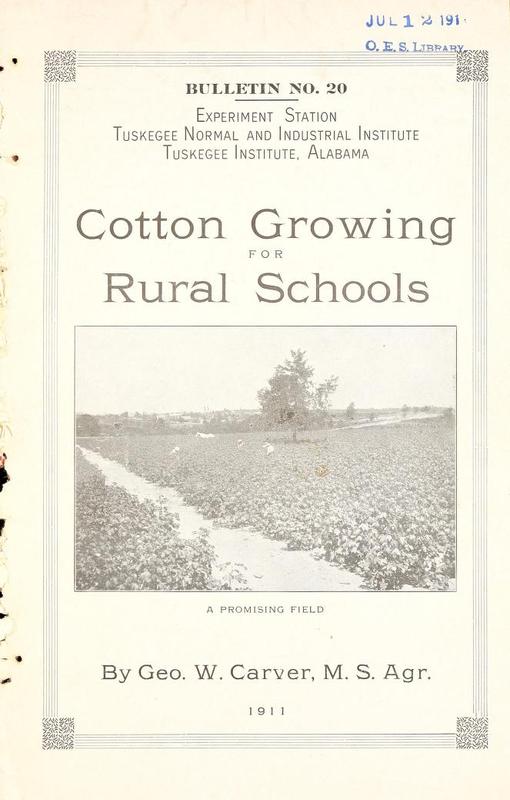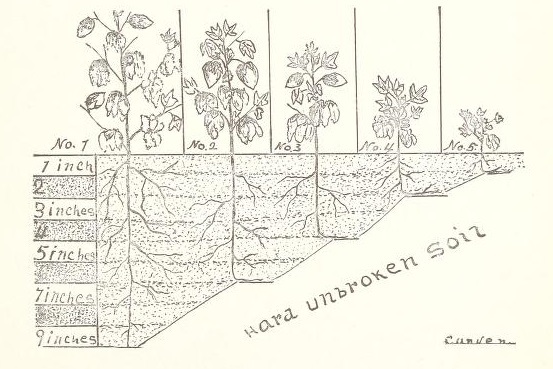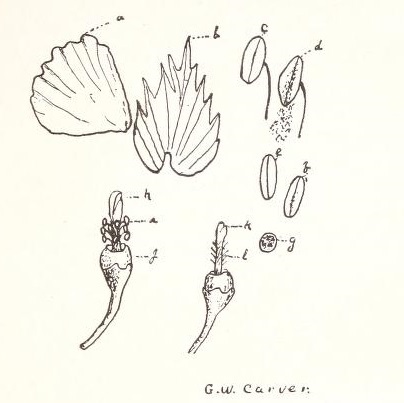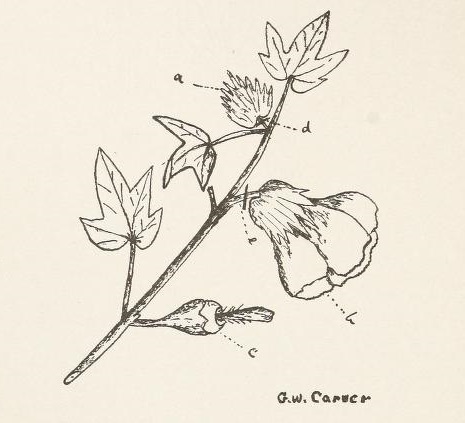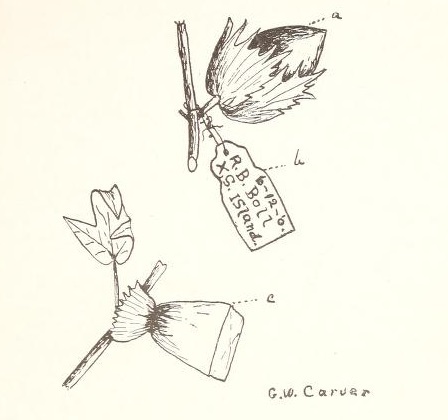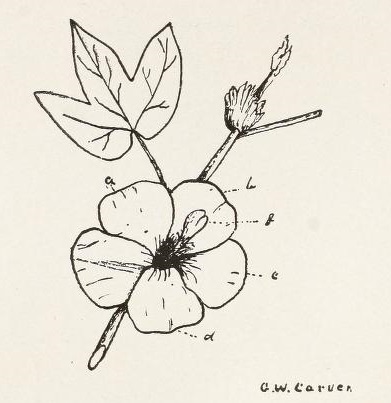Carver's Nature Study Bulletins
[In the] bulletin titled Nature Study and Gardening for Rural Schools...Carver proclaimed his ‘chief mission’ to be to awaken ‘a greater interest in practical nature lessons in the public schools of our section’ and ‘To bring before our young people in an attractive way a few of the cardinal principles of agriculture.’ Carver endorsed the idea of ‘a very large part of the child’s education’ occurring ‘outside of the four walls designated as class room.’ He also urged the schools to begin ‘nature study’ with ‘the wee tots, the kindergarteners.’ He urged teachers to think of gardening as a way of teaching ‘composition, spelling, reading, arithmetic, geography, and history.’ He followed with elaborate instructions for teachers that included labor contracts between students and teachers and instructions on how to care for tools, prepare soil, select and test seeds, plant, cultivate, harvest and market crops, and much more. In short, the bulletin was designed to introduce to children all the concepts about conservation and agriculture that Carver was elsewhere trying to teach college students and adults. He seemed to understand that children were impressionable and excited about learning, and he hoped to capitalize on those characteristics. ‘Instinctively,’ he believed, ‘they prefer to deal with natural objects and real things.’
Kremer, G.R. (2011) George Washington Carver: A Biography. Santa Barbara, CA: Greenwood, p. 69.
(Click any image in this exhibit to get more information, including access to full text)
"Since the publication of Teachers’ Leaflet No. 2, Nature Study and Children’s Gardens, the work has not only grown in a satisfactory manner, but has advanced far beyond the most sanguine hopes of its promoters — indeed the 1,500 copies of this leaflet which was published in 1904 have been exhausted without satisfying the increasing demand.
The above facts in connection with a careful study of the needs of the rural teacher, we have thought wise to revise and amplify it, bringing the same more up to date.
The chief mission of this little booklet is that of emphasizing the following points:
1. The awakening of a greater interest in practical nature lessons in the public schools of our section.
The thoughtful educator realizes that a very large part of the child’s education must be gotten outside of the four walls designated as class room. He also understands that the most effective and lasting education is the one that makes the pupil handle, discuss and familiarize himself with the real things about him, of which the majority are surprisingly ignorant.
2. To bring before our young people in an attractive way a few of the cardinal principles of agriculture, with which nature study is synonymous.
If properly taught the practical Nature study method cannot fail to both entertain and instruct.
It is the only true method that leads up to a clear understanding of the fundamental principles which surround every branch of business in which we may engage. It also stimulates thought, investigation, and encourages originality."
"There is doubtless no plant more interesting to the casual observer, or more useful economically and more wonderful to the searcher for truth than the cotton plant. It forms the principal products of eight great states of this Union. It also has an ancient history. It is said to have been grown and manufactured into clothing over 2,500 years ago. The early Greek historian, Herodotus said of the fiber, 'that it was of better quality and finer than that of wool.'”
Carver illustrated this bulletin with some of his own drawings:
 An official website of the United States government.
An official website of the United States government.



